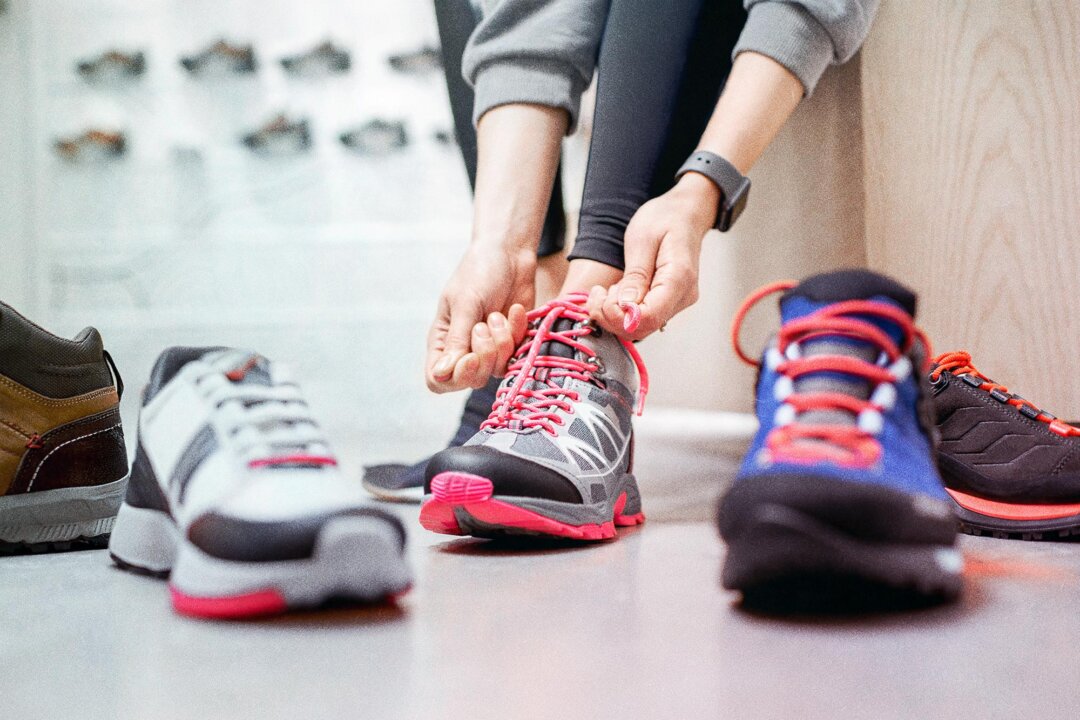Wearing overly cushioned, pillowy shoes all the time is like wearing oven mitts throughout an entire cooking session—not just when pulling something hot from the oven, but while chopping, mixing, and plating, too. The mitts dull your senses, restrict movement, and make it harder to use the small muscles in your fingers and wrists—just when you need precision for tasks like measuring spices and kneading dough. Shoes turn down the volume on the sensory role of the skin to take in information about the temperature and surfaces underneath our feet, and also stifle muscles involved in balance and coordination, such as walking, running, or jumping.
Each layer of foam or rubber between our feet and the ground dulls the sensory experience even further. Our smaller foot muscles miss the opportunity to become stronger, and the brain is deprived of useful information about the terrain underfoot. The evolution of concrete running surfaces combined with runner injuries made supportive, cushioned shoes an easy tradeoff, especially for athletes.

However, studies have shown runners who wear maximalist shoes are more prone to leg stiffness, weaker toes, and more impact loading. That is, the force when the foot hits the ground causes a higher risk of damage to the body. Over time, relying too much on shoe cushioning can lead to foot and joint injuries, reduced balance, and impaired cognitive function.
Even cushioned shoes can reduce blood circulation and pinch sensory nerves, leading to conditions like neuropathy that cause tingling, pain, and weakness in the feet and can move upward in the legs and back. Loss of sensation in the feet can also make it hard to sense temperature or pain and may affect balance. Of note, impact loading refers to the vertical impact force and the rate at which that force increases when the runner’s shoe hits the ground.
“These discoveries may explain why shoes with more cushioning do not protect against impact-related running injuries,” the authors wrote. Long-time hiker Kelly Barcus, founder of the Barefoot Shoe Guide, compares shoe cushioning to weight lifting. Wearing shoes with a lot of cushioning would be like doing only biceps curls and ignoring all the other muscles of the arms.
“If we are walking on these super cushions, we’re only giving ourselves one-dimensional movement. We don’t even notice the unevenness of what we’re walking on, if there’s a rock or root. If you’re in so much cushion, you’re totally cut off from that,” she told The Epoch Times.
Minimal or no cushioning allows your feet to articulate with surfaces, Barcus added, creating an interesting, active sensory experience, especially on surfaces with grass or gravel. It also gives all the foot muscles an opportunity to activate. “You realize how much more engaged you are when you can feel and move more.
It goes up the whole kinetic chain,” she said, adding that even the brain is more activated when the foot is collecting and sending more information. Age: Having less fat padding on the feet, which reduces natural shock absorption. Flat feet: Lacking an arch, which may require padded arch support to reduce pain from overstretched tendons.
High arches: Placing more pressure on the ball and heel of the feet, which leads to less shock absorption and increased pain. For those concerned that wearing shoes with no cushioning will be painful, there are a range of cushioning options. Some trendy super-cushioned shoes have a stack height—the total distance from the foot to the bottom of the shoe—of 40 to 50 millimeters, which includes cushioning and sole height.
Minimal shoes have a stack height of 3 to 8 millimeters. Additionally, anyone who runs more than 30 miles a week should schedule a recovery run in cushioned shoes once a week to give muscles and bones in the feet a break, Kalika told The Epoch Times in an email interview. Runners should choose sole thickness and cushioning based on their body composition, weight, running style, and amount of running, he said.
Those with chronic ankle instability or a history of tendinopathy—an overstretched tendon—can be prone to reinjury in cushioned shoes. Kalika advised that new runners should avoid cushioned shoes because they alter normal muscle use. For those who have foot injuries, it’s best to heal first and use exercises to strengthen the foot before trying out different shoes.
Downtime without wearing shoes at all will also help naturally recover feet that have been shoved in shoes all day. Heel drops: Stand on the edge of a step and let your heels drop as far as is comfortable. Hold to stretch or gently lift and lower 10 times on each foot.
Short foot: Press your toes into the floor (without curling or squeezing them) while lifting your arch. Raise the arch, relax the muscles, and repeat for 10 slow repetitions on both feet. Double heel lifts: Slowly lift both heels to rise on the balls of your feet, keeping your ankles from rolling outward.
To increase difficulty, place a small ball between your ankles and hold it while lifting. Complete 10 lifts. Towel curls: Place a small towel on the ground and use your toes to pull it toward you, keeping your heel planted.
Repeat 10 times on both feet. While a dramatic change in footwear could be fine for many people, it might be beneficial to work with a specialist to make the transition if you’re dealing with foot or joint pain. “It’s really important to work with a functional podiatrist to see what works best for them, rather than being very black or white that all cushioned shoes are bad for you.
”.
Health

Why Taking a Break From Cushioned Shoes Is Good for Your Feet

Experts weigh in on when cushioning helps—and when it hurts—and how to make your feet stronger no matter how plush your shoes are.















